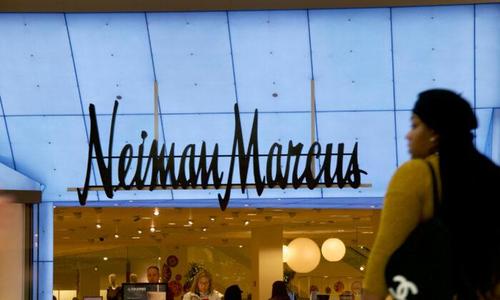Mall Traffic Hits Post-Pandemic High as Retail Recovery Continues
Authored by Tom Ozimek via The Epoch Times,
American shoppers continued to flock to the nation’s malls in greater numbers in April, with the foot traffic gap nearly halving in just two months, reinforcing the view of a retail recovery gaining traction.
Foot traffic at a sample of 50 malls in April showed that, compared to the pre-pandemic April 2019 level, it was down 18.7 percent, a marked improvement from recent months, according to a report provided to The Epoch Times by mobile-device location data analytics firm Placer.ai.
“In this metric, there was a strong forward momentum with the visit gap shrinking from 23.7 percent down in March to just 18.7 percent down in April,” the company said in the report.
“This is the strongest mark the index has seen since the pandemic began, and another sign that the retail recovery is already in progress,” the report noted, adding that the data “further deepens the optimism around top tier malls and their ability to anchor key retail expansions moving forward.”
Placer’s report also featured a striking statistic, namely that mall foot traffic surged by a staggering 3991.7 percent in April compared to April 2020, although the report noted that “this number is essentially meaningless as the comparison is to a fully shut down month the year prior.” An earlier mall traffic comparison between March 2021 and March 2020 showed a sharp 86 percent rise, although with much the same caveat that the baseline was low due to pandemic-related closures in March last year.
The fate of the retail recovery was clouded by earlier economic data showing U.S. consumer spending falling by the most in 10 months in February as a cold snap gripped many parts of the country and the boost from a second round of stimulus checks faded. But the most recent release from the Commerce Department’s Bureau of Economic Analysis (BEA) dispelled much of that gloom, showing personal consumption expenditures in March saw a sharp 4.2 percent boost. Consumption is a key driver of the U.S. economy, accounting for around two-thirds of gross domestic product.
The consumer spending data came on the heels of a Moody’s report that upgraded its outlook for the U.S. retail and apparel sector from stable to positive.
“As pandemic pressures ease and the cadence of vaccinations accelerates, we expect the retail sector to experience broad-based improvement. Operating profit will grow a robust 10-12 percent in 2021, and hard-hit sectors such as apparel, department stores, and off-price will see the most pronounced operating profit growth over the next 12 to 18 months,” said Mickey Chadha, Moody’s vice president and senior credit officer, in a statement.
U.S. economic growth accelerated sharply at a 6.4 percent annualized rate in the first quarter, fueled by the rush of consumer spending, according to a separate BEA release on U.S. gross domestic product.
But the accelerating growth has revived concerns about the economy overheating and putting upward pressure on prices.
A Labor Department report Wednesday showed that inflation has soared above economists’ predictions and by the most in over a decade, as fiscal stimulus and booming demand pushed against supply constraints.
The year-over-year consumer price index (CPI), a measure of inflation, jumped by 4.2 percent in April after rising 2.6 percent in March. This is the largest 12-month increase since September 2008, when the index rose by 4.9 percent.
On a monthly basis, the CPI inflation measure jumped 0.8 percent in April after rising 0.6 percent in March, while the so-called core CPI, which excludes the volatile food and energy components, soared by 0.9 percent. The surge in the core CPI is the largest monthly increase since April 1982.
The spike in inflation is likely to stoke fears of an interest rate hike by the Fed, although Federal Reserve officials have played down the concerns by predicting that price rises would be “transitory.”
Fed officials have also repeatedly said they will not raise rates or reduce the monthly bond-buying program until inflation averages around two percent for a longer period of time.
Tyler Durden
Thu, 05/13/2021 – 20:05
via ZeroHedge News https://ift.tt/3fdThiM Tyler Durden
